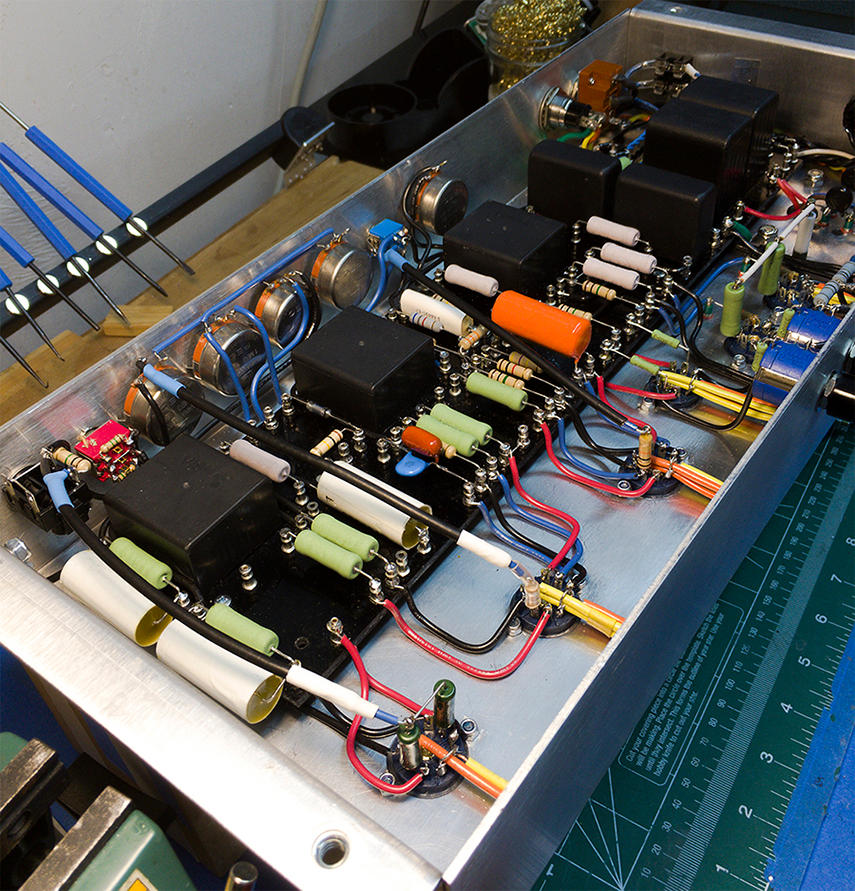I'd recommend disconnecting the previous stage, as your test signal can then be applied in the normal manner (ie. to ground), and not applied as a voltage across a resistor within the feedback loop.
Have you checked the frequency response for your DMMs, as a cross-check for measuring sine and square wave rms levels (many DMMs roll off above mains ac or 1kHz type frequencies) against your scope (which probably calculates rms quite well).
You need a remote turn-on feature for a few valve amps in your garage - as a preheat
Measuring the total output stage gain with resistive load and no feedback is the easier way to check for unsuspecting gain peaks at very low and very high frequencies, as they may not be controlled by the feedback.
Setting up an X-Y plot of input and output voltages is also a very easy way to see when phase shift starts to kick in, and when phase shift exceeds 90deg and gets close to or exceeds 180deg, and align that with gain response. If you can get that data, then you can identify how stable the response is in a formal phase/gain margin manner.
Have you checked the frequency response for your DMMs, as a cross-check for measuring sine and square wave rms levels (many DMMs roll off above mains ac or 1kHz type frequencies) against your scope (which probably calculates rms quite well).
You need a remote turn-on feature for a few valve amps in your garage - as a preheat

Measuring the total output stage gain with resistive load and no feedback is the easier way to check for unsuspecting gain peaks at very low and very high frequencies, as they may not be controlled by the feedback.
Setting up an X-Y plot of input and output voltages is also a very easy way to see when phase shift starts to kick in, and when phase shift exceeds 90deg and gets close to or exceeds 180deg, and align that with gain response. If you can get that data, then you can identify how stable the response is in a formal phase/gain margin manner.


Comment